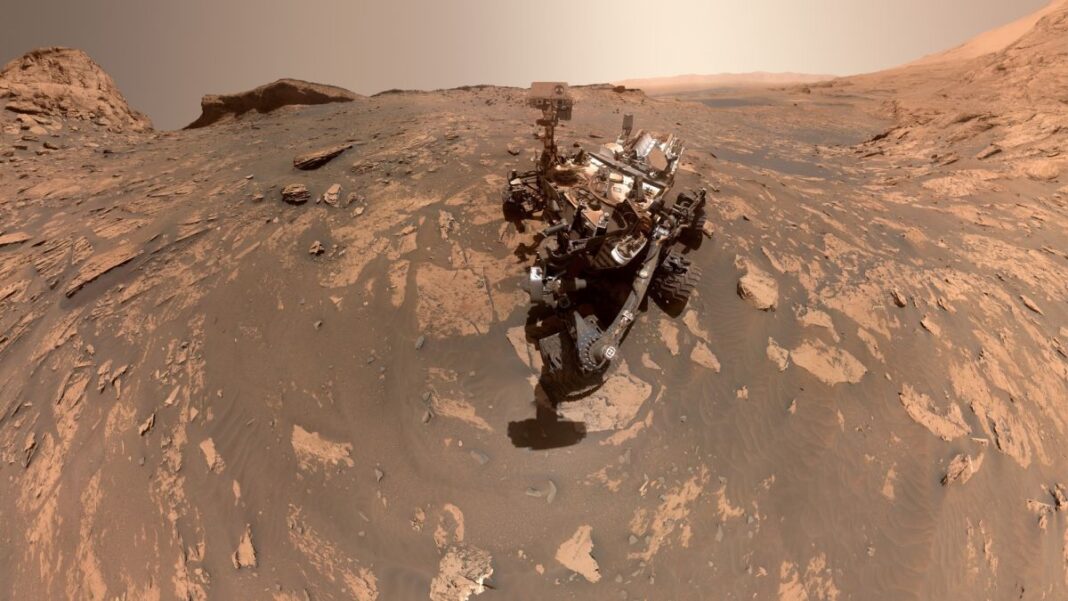NASA’s Perseverance rover is getting set to lighten its load a little on the Red Planet.
Perseverance landed inside Mars’ Jezero Crater in February 2021 to hunt for signs of ancient Red Planet life and collect samples for future return to Earth. The car-sized rover has drilled out 14 Mars rock cores to date — two apiece from seven target stones — and it will likely drop half of them in November or December, said mission team member Jim Bell of Arizona State University.
This is the opposite of carelessness; it’s a safeguard designed to protect the overall Mars sample-return project, which is a joint effort of NASA and the European Space Agency (ESA). The baseline plan calls for Perseverance to deliver its samples to a NASA lander that sports a built-in rocket, which will launch the Mars material to orbit. An ESA-provided orbiter will then snag the samples and haul them back to Earth. They could land here as soon as 2033.
Related: 12 amazing photos from the Perseverance rover’s 1st year on Mars
The lander, Mars rocket and ESA orbiter are currently scheduled to launch in the 2027-2028 timeframe. Perseverance is in good health, but there’s a chance the rover won’t be doing so well when that other hardware arrives at the Red Planet. Hence the coming depot drop, which will involve one sample from each drilled rock. (Perseverance will keep the other sample set onboard.)
“This is our backup sample cache, just in case the rover itself can’t deliver samples,” Bell, the principal investigator for Persevance’s Mastcam-Z camera system, said during a livestreamed presentation Thursday (Oct. 20) at the 2022 Mars Society Convention.
The NASA sample-return lander will carry two small helicopters, each of them modeled on Ingenuity, the little rotorcraft that landed on Jezero’s floor with Perseverance last year and has aced more than 30 Red Planet flights since. If need be, the two choppers will carry sample tubes, one by one, from the depot — or depots, as there could end up being more than one — to the lander. (“Depot” is a slightly overgrand term for a spot where tubes will be lying in the dirt.)
The depot Perseverance will establish in the next month or two is at a site dubbed Three Forks, which Bell said is a “pretty flat area.” The topography is therefore favorable for safe helicopter landings and liftoffs.
Perseverance has some work to do before it can head over to Three Forks, however. It’s currently collecting regolith — samples of Martian sand and dust — and will likely continue doing so through next week, Bell said.
Perseverance carries a total of 43 titanium tubes, 38 of which are designed to hold samples. The other five are “witness tubes” that will help mission team members determine which materials, if any, in collected Martian samples may be contaminants from Earth.
The rover has filled 15 of its sampling tubes to date, 14 of them with drilled rock cores (though the team is having trouble sealing up the tube with the most recently collected core). The other filled tube contains an “atmospheric sample” — Martian air but nothing else, the result of a drilling effort that went awry thanks to a surprisingly crumbly rock.
Mike Wall is the author of “Out There (opens in new tab)” (Grand Central Publishing, 2018; illustrated by Karl Tate), a book about the search for alien life. Follow him on Twitter @michaeldwall (opens in new tab). Follow us on Twitter @Spacedotcom (opens in new tab) or on Facebook (opens in new tab).


